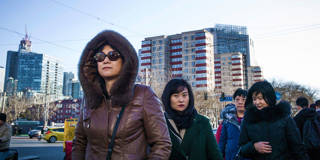OnPoint Subscriber Exclusive
Longer Reads provide in-depth analysis of the ideas and forces shaping politics, economics, international affairs, and more.

China’s Growth Odyssey
China’s steadily declining rate of economic growth is a problem for both China and the world economy. Now that US President Donald Trump is set to wreak havoc on global stability, can China still hope to achieve the widely shared prosperity it has long sought?
SHANGHAI – Will China’s sociopolitical stability and economic dynamism continue to hold? It’s a question China-watchers are asking more frequently now than at any time in the past three decades. This fall, the 19th Congress of the Communist Party of China will decide (or not) President Xi Jinping’s successor in 2022, while also replacing (maybe) five members of the seven-member Politburo Standing Committee. The result, one hopes, will not be a new period of turbulence like that which the election of Donald Trump has unleashed on the United States.